
Monte-Carlo radiative transfer simulation of the circumstellar disk of the Herbig Ae star HD 144432
by Chen, L.; Kreplin, A.; Weigelt, G.; Hofmann, K.-H.; Schertl, D.; Malbet, F.; Massi, F.; Petrov, R.; Stee, Ph., 2016, A&A, 586, 54C
Studies of pre-transitional disks, with a gap region between the inner near-infrared-emitting region and the outer disk, are important to improving our understanding of disk evolution and planet formation.Previous infrared interferometric observations have shown hints of a gap region in the protoplanetary disk around the Herbig Ae star HD 144432.
We study the dust distribution around this star with two-dimensional radiative transfer modeling.
We compare the model predictions obtained via the Monte-Carlo radiative transfer code RADMC-3D with infrared interferometric observations and the spectral energy distribution of HD 144432.
The best-fit model that we found consists of an inner optically thin component at 0.21-0.32 AU and an optically thick outer disk at 1.4-10 AU. We also found an alternative model in which the inner sub-AU region consists of an optically thin and an optically thick component.
Our modeling suggests an optically thin component exists in the inner sub-AU region, although an optically thick component may coexist in the same region. Our modeling also suggests a gap-like discontinuity in the disk of HD 144432. Based on observations made with ESO telescopes at Paranal Observatory under program ID 083.D-0224(C) and 085.C-0126(A).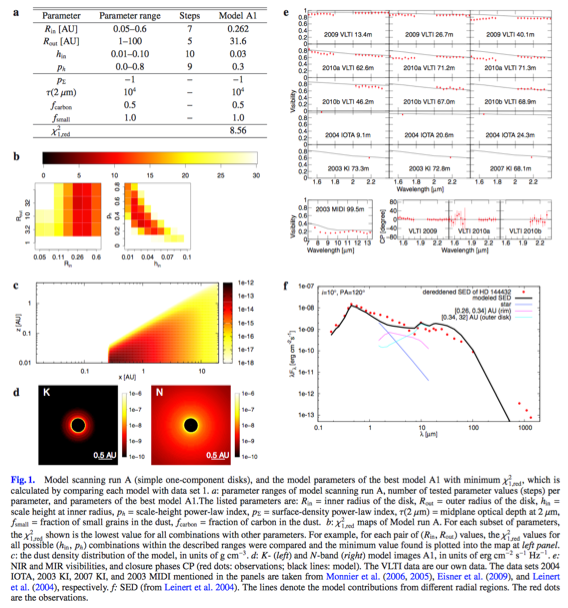

Probing the wind-launching regions of the Herbig Be star HD 58647 with high spectral resolution interferometry
by D. Kurosawa, Ryuichi; Kreplin, A.; Weigelt, G.; Natta, A.; Benisty, M.; Isella, Andrea; Tatulli, Eric; Massi, F.; Testi, Leonardo; Kraus, Stefan; Duvert, G.; Petrov, Romain G.; Stee, Ph., 2016, MNRAS, 457, 2236
We present a study of the wind launching region of the Herbig Be star HD 58647 using high angular (λ/2B = 0′′.003) and high spectral (R = 12000) resolution interferomet- ric VLTI-AMBER observations of the near-infrared hydrogen emission line, Brγ. The star displays double peaks in both Brγ line profile and wavelength-dependent visibil- ities. The wavelength-dependent differential phases show S-shaped variations around the line centre. The visibility level increases in the line (by ∼ 0.1) at the longest pro- jected baseline (88 m), indicating that the size of the line emission region is smaller than the size of the K-band continuum-emitting region, which is expected to arise near the dust sublimation radius of the accretion disc. The data have been analysed using radiative transfer models to probe the geometry, size and physical properties of the wind that is emitting Brγ. We find that a model with a small magnetosphere and a disc wind with its inner radius located just outside of the magnetosphere can well reproduce the observed Brγ profile, wavelength-dependent visibilities, differential and closure phases, simultaneously. The mass-accretion and mass-loss rates adopted for the model are M ̇ a = 3.5 × 10−7 and M ̇ dw = 4.5 × 10−8 M⊙ yr−1, respectively (M ̇dw/M ̇a = 0.13). Consequently, about 60 per cent of the angular momentum loss rate required for a steady accretion with the measured accretion rate is provide by the disc wind. The small magnetosphere in HD 58647 does not contribute to the Brγ line emission significantly.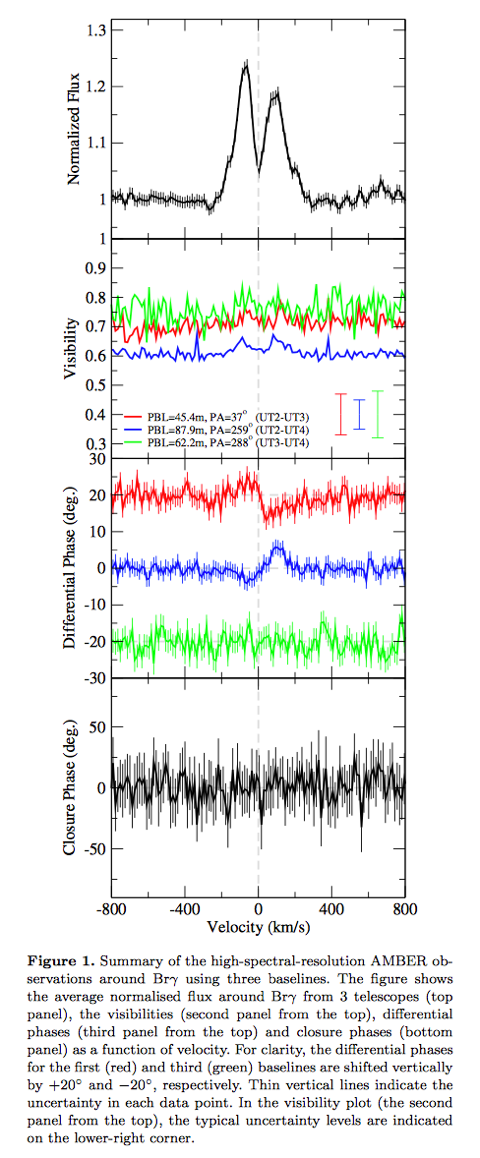
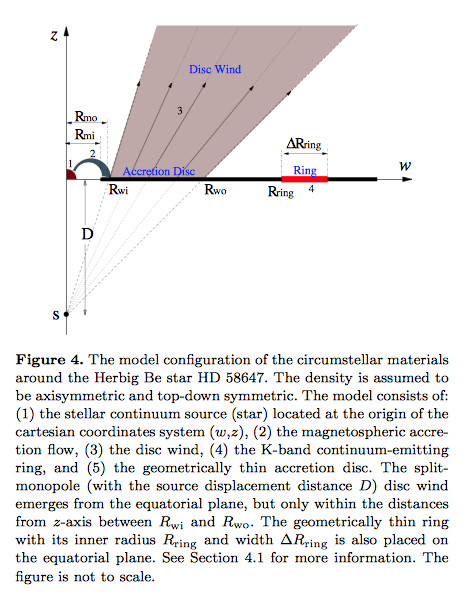
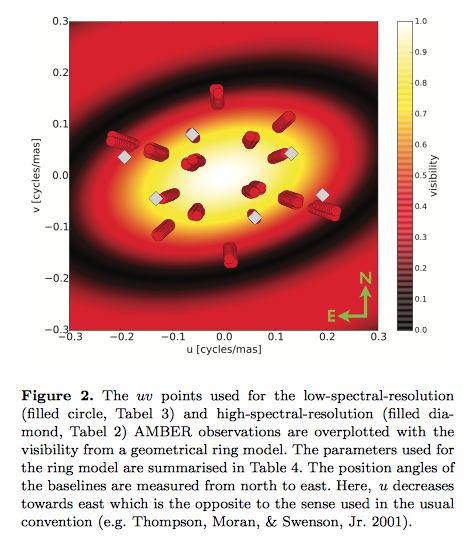
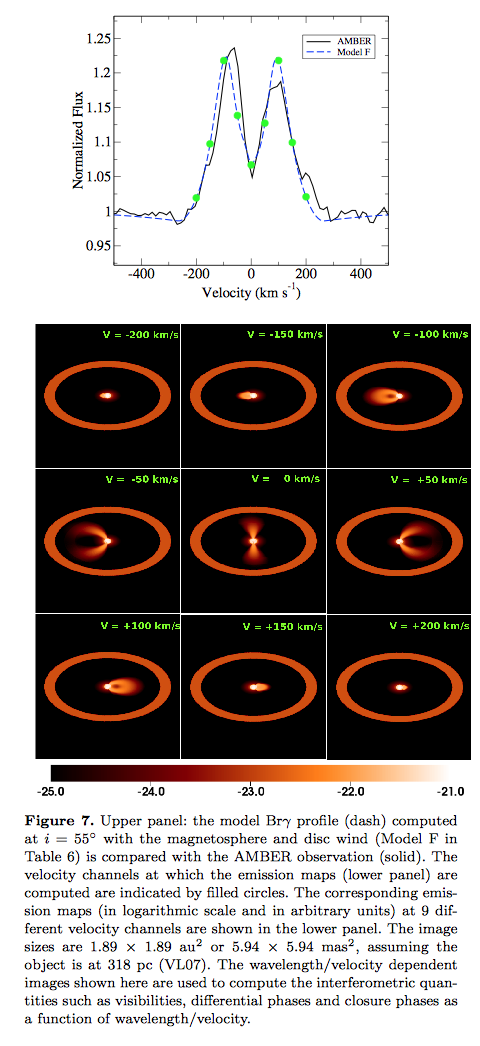
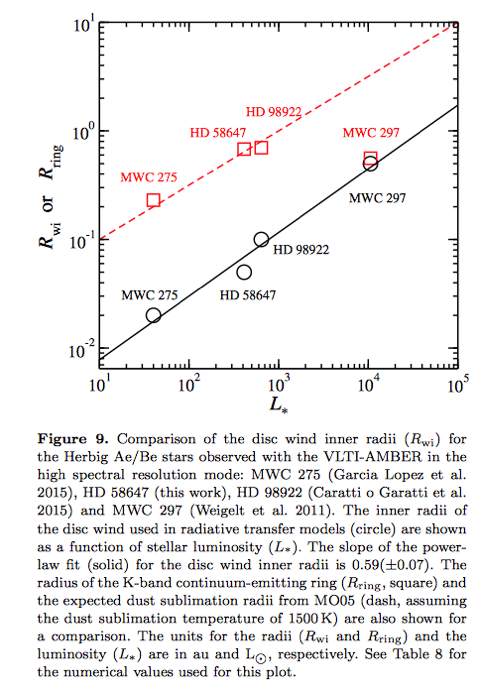
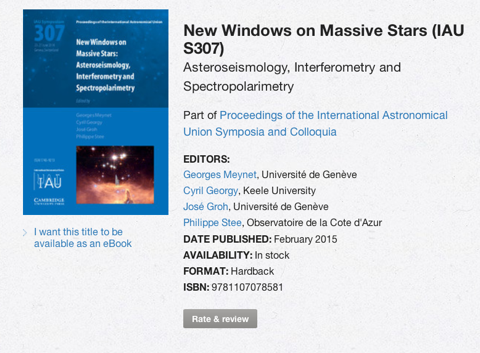
Massive stars play a crucial role in the Universe: they are important drivers for the photometric and chemical evolution of galaxies; they are sources of important elements, including those necessary for life; and, with their strong winds and supernova explosions, they feed the interstellar medium with momentum and kinetic energy, impacting on the star formation rate. Knowledge of the evolution of massive stars is important not only for stellar physics, but also for probing the evolution of galaxies and their star formation histories throughout cosmic time. This volume provides an introduction to these topics and to the techniques used to investigate the properties of massive stars, including asteroseismology, spectropolarimetry, and interferometry. It highlights synergies between these new techniques and more classical methods, to create a synthetic view of massive stars, leading researchers towards new and innovative solutions to the most topical questions regarding the evolution of massive stars.
- - Provides a fresh summary on massive star physics and evolution, directed at those who are interested in massive stars in galaxies
- - Features cross-disciplinary reviews to fosters links between the cutting-edge techniques of asteroseismology, interferometry, and spectropolarimetry
- - Provides basic introductions to these three observational techniques for researchers who wish to understand their main features, and weigh up their benefits and potential weaknesses

The expanding fireball of Nova Delphini 2013
By Schaefer, G.H., T. ten Brummelaar, D. R. Gies, C. D. Farrington, B. Kloppenborg, O. Chesneau, J. D. Monnier, S. T. Ridgway, N. Scott, I. Tallon-Bosc, H. A. McAlister, T. Boyajian, V. Maestro, D. Mourard, A. Meilland, N. Nardetto, Stee, Ph. et al., 2014, Nature.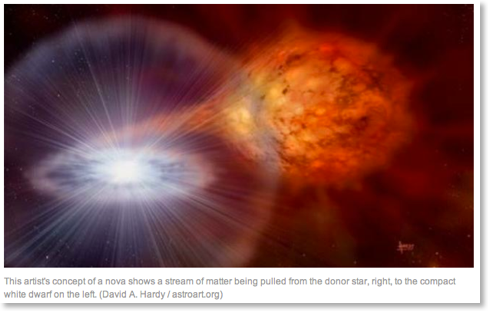
Observations of gas expanding from a nova explosion, reported in Nature this week, offer a rare glimpse of a nova.
A nova is an explosion on the surface of a white dwarf. Novae are much smaller and less violent than supernovae, and do not lead to the disruption of the star, but rather just eject a surface layer of gas into space. Interferometric observations of Nova Delphini 2013, discovered in August 2013, enable Gail Schaefer and colleagues to measure the size, shape, speed and distance of the ejected gas. These observations are possible thanks to the CHARA array in California, USA, which has the high spatial resolution capable of capturing the earliest stages of the expansion of the ejecta. They find that the ejecta changes during the early stages of the nova expansion, starting as a uniform core, but spreading out to what might be a bipolar structure as early as the second day after the explosion. Combining measurements of the expansion rate and speed of the outflow, the authors calculate that the nova is around 4.54 kiloparsecs (1 parsec is around 3.26 light years) away.
Have a look to the news in the Los-Angeles Times.

